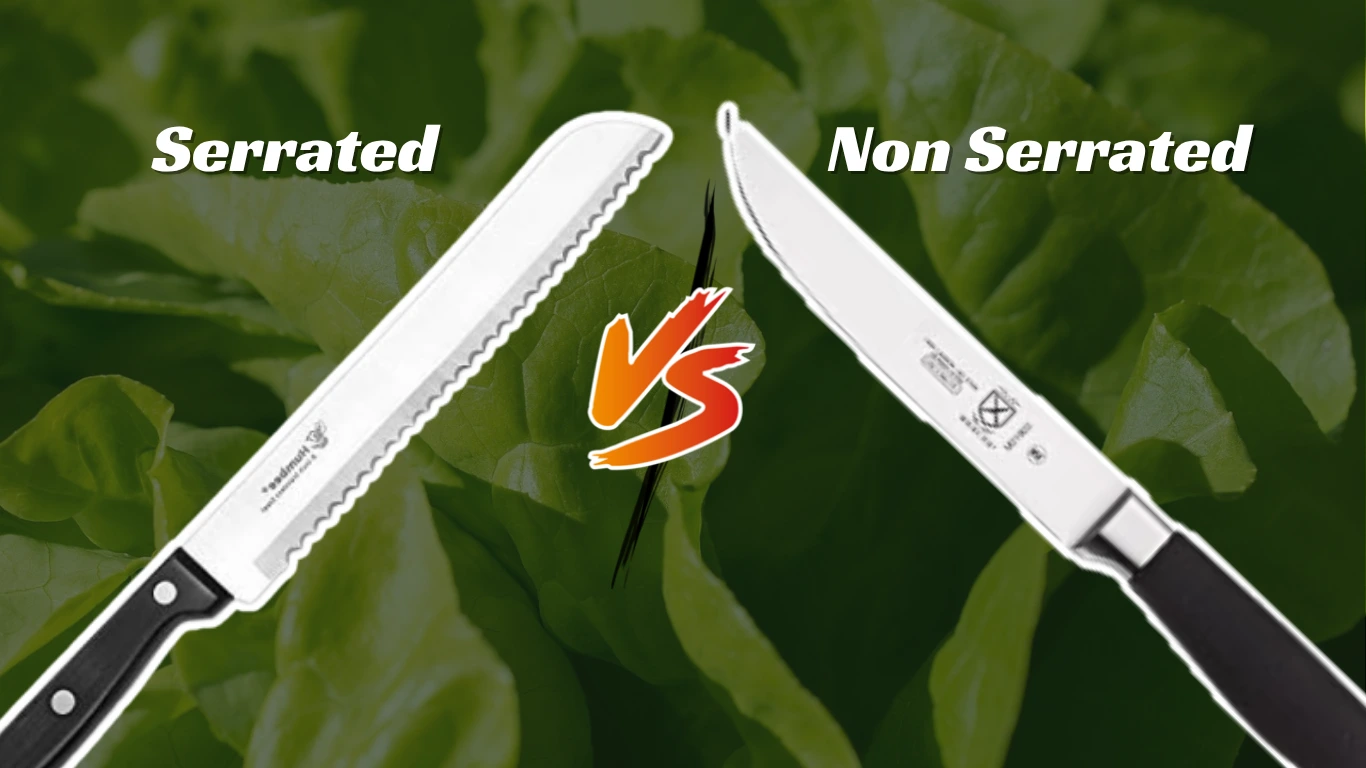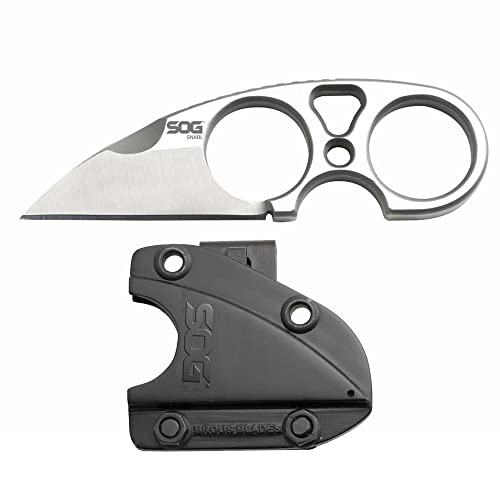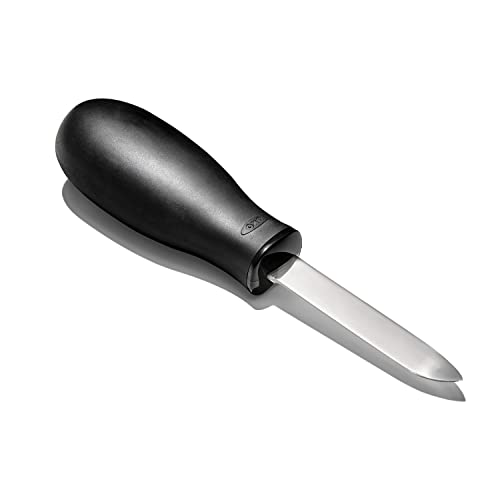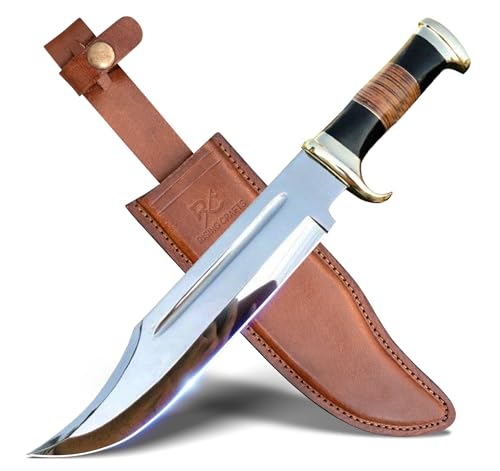Serrated Vs Non Serrated Knife: Which Cuts Best?
Choosing the right knife for your kitchen can feel like a big decision. You might wonder if you should opt for a serrated or a non-serrated knife.
Both have unique features that make them essential tools in any kitchen, but how do you decide which one suits your needs the best? Understanding the differences can make your cooking experience smoother and more enjoyable. Imagine slicing through a ripe tomato with ease or carving a roast with precision.
This is where your choice of knife comes into play. You’ll discover the strengths and weaknesses of each type, helping you to make an informed decision that enhances your culinary adventures. Stay with us to find out which knife deserves a spot in your kitchen and why it matters to your cooking success.

Credit: fnsharp.com
Serrated Knife Benefits
Choosing the right knife can transform your culinary experience. A serrated knife, with its unique jagged edge, offers distinct advantages over its non-serrated counterpart. From cutting through crusty bread to slicing delicate fruits, the serrated knife brings precision and ease to your kitchen tasks. Understanding its benefits can help you make informed decisions about your kitchen tools.
Cutting Bread
The serrated knife excels at cutting bread with its saw-like blade. This design allows it to grip the crust without crushing the loaf. Here are key benefits:
- Efficient Slicing:Easily cuts through crusty exteriors while preserving the soft interior.
- Minimal Pressure:Requires less force, reducing the chance of squashing the bread.
Consider this table comparing serrated and non-serrated knives for bread:
| Feature | Serrated Knife | Non-Serrated Knife |
|---|---|---|
| Pressure Needed | Low | High |
| Crust Handling | Excellent | Poor |
Serrated knives are indispensable in bakeries and homes. They ensure clean cuts and maintain the loaf’s shape, offering a reliable solution for everyday bread slicing.
Slicing Soft Fruits
Serrated knives are perfect for slicing soft fruits like tomatoes and peaches. Their jagged edge handles delicate skins effortlessly. Here’s why:
- Precision Cutting:Glides through fruit without tearing.
- Maintains Texture:Keeps fruit slices intact and visually appealing.
This knife is ideal for fruits with thin skins and soft flesh. Non-serrated blades may crush these fruits, causing juice loss. Serrated knives maintain the fruit’s integrity, making them popular in kitchens worldwide.
Reducing Friction
Serrated knives reduce friction during cutting. This feature offers numerous advantages:
- Smooth Glide:The teeth reduce contact with the food’s surface.
- Less Sticking:Reduces food sticking, ensuring cleaner cuts.
Here is a comparison table showcasing friction differences:
| Aspect | Serrated Knife | Non-Serrated Knife |
|---|---|---|
| Friction | Low | High |
| Clean Cuts | Consistent | Variable |
Reduced friction ensures less wear on the blade, prolonging its life. This makes serrated knives a smart investment for daily kitchen use.
Non-serrated Knife Benefits
Choosing the right knife for your kitchen tasks can make all the difference in your cooking experience. Serrated and non-serrated knives each offer unique advantages, but non-serrated knives are renowned for their precision, versatility, and ease of maintenance. Understanding the benefits of non-serrated knives can help you make informed decisions for your culinary needs.
Precision Cutting
Non-serrated knives excel in precision cutting. Their smooth edges allow for clean, accurate cuts without tearing or crushing food. This attribute is crucial for delicate tasks such as slicing fruits, vegetables, and meats where presentation matters. Here’s why precision cutting is a standout feature:
- Clean Slices:Achieve neat, uniform slices that enhance food presentation.
- Control:Better control over the knife ensures consistent thickness in every slice.
- Less Pressure:Requires less force, reducing the risk of slipping and accidents.
Precision is particularly beneficial for chefs and home cooks aiming for aesthetically pleasing dishes. Whether you’re preparing a gourmet meal or a simple salad, the non-serrated knife ensures each slice is precise and uniform, adding to the visual appeal of your dishes.
Versatile Uses
Non-serrated knives are incredibly versatile, making them a staple in any kitchen. Their adaptability shines through in a variety of culinary tasks, including:
- Slicing:Perfect for slicing meats, breads, and vegetables with ease.
- Chopping:Efficient for chopping herbs, nuts, and other ingredients.
- Dicing:Ideal for dicing onions, garlic, and other small items.
The versatility of non-serrated knives is further emphasized in their ability to handle both soft and hard textures seamlessly. For instance, slicing a ripe tomato or cutting through a tough piece of meat is equally manageable. This multi-purpose tool minimizes the need for multiple knives, streamlining your kitchen activities and saving time.
Easier To Sharpen
Maintaining a sharp edge is crucial for any knife, and non-serrated knives are notably easier to sharpen. Unlike serrated knives, which require special tools and techniques, non-serrated knives can be honed using basic sharpening tools. Here’s what makes sharpening straightforward:
- Simple Tools:Use a whetstone or a manual sharpener for efficient results.
- Consistent Edge:Maintain a consistent sharp edge with regular honing.
- DIY Friendly:No need for professional services; home sharpening is effective.
A sharp non-serrated knife not only performs better but also enhances safety by reducing the effort needed in cutting tasks. Regular sharpening is convenient and ensures your knife is always ready for action, making it a reliable tool in your kitchen arsenal.
Choosing The Right Knife
Choosing the right knife is vital for any cooking task. The decision between a serrated and a non-serrated knife impacts your kitchen experience. Each type of knife has its strengths, making it suitable for specific tasks. Understanding the differences helps in making an informed choice, ensuring you have the right tool for the job.
Type Of Food
Different foods require different knives for optimal results. Serrated knives excel with:
- Bread:Their teeth grip the crust and slice through without crushing.
- Tomatoes:The serrations pierce the skin easily, preventing squishing.
- Fruits with tough skins:Like pineapples and melons.
Non-serrated knives, or straight-edge knives, are perfect for:
- Meat:Clean, smooth cuts without tearing.
- Vegetables:Precision dicing and slicing.
- Cheese:Smooth, effortless cuts.
The table below summarizes which knife suits each food type:
| Food Type | Serrated Knife | Non-Serrated Knife |
|---|---|---|
| Bread | ✔️ | ❌ |
| Tomatoes | ✔️ | ❌ |
| Meat | ❌ | ✔️ |
| Vegetables | ❌ | ✔️ |
Cutting Techniques
Each knife type requires a unique cutting technique. Serrated knives work best with a sawing motion. This technique makes use of the blade’s teeth, allowing for:
- Efficient cutting:Especially for tough or crusty surfaces.
- Reduced pressure:Less force needed, protecting delicate items.
Non-serrated knives need a different approach. A smooth, downward motion is key. This technique offers:
- Precision:Ideal for neat, clean cuts.
- Control:More accuracy with each slice.
The choice of technique impacts the final result, affecting the texture and presentation of your dish. Using the correct method ensures efficiency and precision in your kitchen tasks.
Personal Preference
Personal preference plays a significant role in choosing the right knife. Some prefer the versatility of a serrated knife:
- Handles various tasks without frequent sharpening.
- Ideal for those who prepare diverse meals.
Others lean towards the precision of non-serrated knives:
- Offers control and accuracy.
- Preferred by those who value clean, precise cuts.
Consider your cooking habits and the types of meals you prepare regularly. A home chef who bakes often might prefer a serrated knife. While someone focused on gourmet cooking might choose non-serrated. The decision ultimately rests on what feels comfortable and meets your culinary needs.
Maintenance Tips
Choosing between serrated and non-serrated knives often depends on their use. Each type requires different maintenance to ensure longevity and efficiency. Proper care can extend the life of your knives and maintain their cutting performance. Below, we delve into essential maintenance tips for both serrated and non-serrated knives and offer practical storage solutions.
Sharpening Serrated Knives
Serrated knives have a unique edge, which can make sharpening seem challenging. Unlike straight blades, serrated edges require a specialized approach. Here’s how to keep them sharp:
- Use a serrated knife sharpener: These sharpeners have a thin rod that fits between the serrations. It’s perfect for maintaining the blade’s unique edge.
- Focus on individual serrations: Gently run the sharpening rod through each serration. Maintain the angle of the original bevel.
- Check for burrs: After sharpening, feel the knife’s edge for burrs, which are tiny metal shards. Remove them with a light stroke of a honing steel.
Below is a table summarizing the steps:
| Step | Action |
|---|---|
| 1 | Choose a serrated knife sharpener |
| 2 | Sharpen each serration individually |
| 3 | Remove burrs with a honing steel |
Caring For Non-serrated Knives
Non-serrated knives, or straight-edge knives, are versatile and require regular maintenance. Proper care ensures they remain sharp and safe to use. Here are some tips:
- Regular sharpening: Use a whetstone or electric sharpener. Follow the manufacturer’s instructions for best results.
- Honing: Regular honing straightens the blade edge. This is crucial for maintaining sharpness between sharpening sessions.
- Hand wash only: Avoid the dishwasher. The harsh environment can dull the blade and damage the handle.
Consider this routine for caring for non-serrated knives:
- Sharpen monthly using a whetstone.
- Hone weekly to align the blade edge.
- Always hand wash and dry immediately.
Storage Solutions
Proper storage is vital for maintaining knife sharpness and safety. Keeping knives in suitable conditions prevents dulling and accidents. Here are some storage solutions:
- Knife blocks: Store knives with the blade facing upwards. This method keeps edges sharp and easily accessible.
- Magnetic strips: Mount a magnetic strip on the wall. It saves counter space and allows easy access.
- Drawer inserts: Use specially designed inserts to keep knives separated. They prevent blades from rubbing against each other.
Here’s a simple comparison of storage solutions:
| Storage Solution | Pros | Cons |
|---|---|---|
| Knife Blocks | Easy access, protects blades | Takes counter space |
| Magnetic Strips | Space-saving, visually appealing | Requires wall space |
| Drawer Inserts | Organized, protects blades | Uses drawer space |
Common Myths
Choosing between serrated and non-serrated knives can be confusing. Many myths surround these kitchen tools, affecting how they are perceived. Understanding these misconceptions helps in making the right choice for your culinary needs. Here, we debunk some common myths about serrated vs non-serrated knives.
Serrated Knives Are Always Better
Serrated knives have a saw-like edge, making them ideal for cutting through tough surfaces. Some believe they are always the better choice. This is not true for all tasks. Serrated knives excel at:
- Cutting bread without squashing it.
- Slicing through meat with a crust, like roasts.
- Handling fruits with tough skins, such as pineapples.
Yet, for tasks requiring precision, serrated knives can falter. They often tear delicate ingredients, like soft tomatoes. Non-serrated knives offer clean cuts and are better for tasks like:
- Chopping vegetables finely.
- Carving meat with precision.
- Peeling fruits and vegetables.
Serrated knives are not always the better choice. Each type serves different purposes, and choosing the right one depends on the task.
Non-serrated Knives Are Obsolete
Some might think non-serrated knives are outdated. This is a myth. These knives are versatile and essential in any kitchen. Non-serrated knives are perfect for tasks like:
- Slicing soft foods, such as cheese.
- Cutting raw meat with smooth precision.
- Chopping herbs without bruising them.
Non-serrated knives offer greater control and finesse. Unlike serrated knives, they can be sharpened easily, maintaining their edge longer. Non-serrated knives are far from obsolete. They remain a staple due to their versatility and reliability.
Only Chefs Need Quality Knives
A common myth is that only chefs require quality knives. Good knives enhance cooking for everyone, not just professionals. Benefits of quality knives include:
- Improved safety due to sharper blades.
- Better precision in cutting.
- Reduced effort in food preparation.
Quality knives are not exclusive to chefs. Home cooks benefit from using them. A well-made knife makes cooking enjoyable and efficient. Investing in quality knives pays off in the long run, ensuring consistent performance and durability.
Popular Brands
Choosing between serrated and non-serrated knives can be a challenge. Each type has its strengths and ideal uses. Many popular brands offer both serrated and non-serrated options, each with unique features. Knowing the top brands can help you make an informed choice.
Top Serrated Knife Brands
Serrated knives are known for their saw-like edges. They cut through tough surfaces with ease. Here are some top brands known for their quality serrated knives:
- Wüsthof: A well-known German brand. Their serrated knives are durable and sharp.
- Victorinox: Offers affordable and reliable options. Known for their Swiss Army knives.
- Shun: Renowned for Japanese precision. Their serrated knives have a sleek design.
Each brand provides a variety of serrated knives. Whether you need a bread knife or a utility knife, these brands have you covered. Here’s a quick comparison:
| Brand | Price Range | Country of Origin |
|---|---|---|
| Wüsthof | $$$ | Germany |
| Victorinox | $$ | Switzerland |
| Shun | $$$ | Japan |
Top Non-serrated Knife Brands
Non-serrated knives are great for clean, precise cuts. They are ideal for chopping and slicing. Here are some top brands for non-serrated knives:
- Global: Offers lightweight knives with a razor-sharp edge. Made in Japan.
- Henckels: Known for their high-quality German craftsmanship. Offers a wide range of knives.
- MAC: Known for their superior sharpness and balance. A favorite among chefs.
These brands excel in making non-serrated knives. Let’s compare some key features:
| Brand | Price Range | Country of Origin |
|---|---|---|
| Global | $$$ | Japan |
| Henckels | $$ | Germany |
| MAC | $$$ | Japan |
What To Look For
Choosing the right knife involves considering several factors. Here are some key points to think about:
- Blade Material: High-carbon stainless steel offers durability and sharpness.
- Handle Comfort: Look for an ergonomic design for a comfortable grip.
- Purpose: Decide if you need a knife for bread, meat, or vegetables.
- Maintenance: Some knives need regular sharpening. Consider ease of care.
- Budget: Determine how much you’re willing to spend. Balance quality with cost.
Understanding these aspects can guide you in selecting the right knife for your needs. Whether you choose serrated or non-serrated, the right brand and features ensure satisfaction.
Real-life Applications
Choosing between serrated and non-serrated knives can impact your culinary experience. Each type offers unique benefits suited to different tasks. Understanding their real-life applications helps make informed choices. Whether chopping vegetables at home or slicing through crusty bread outdoors, knowing the right knife ensures efficiency and ease.
Home Kitchens
In home kitchens, knives are essential tools for everyday cooking. Serrated knives excel at cutting through foods with tough exteriors and soft interiors. Think crusty bread or ripe tomatoes. Their saw-like edges grip and slice without squashing.
- Best for slicing bread, cakes, and tomatoes.
- Ideal for cutting citrus fruits and soft vegetables.
Non-serrated knives offer versatility and precision for routine tasks. Their smooth blades make clean cuts, perfect for chopping, dicing, and mincing. Essential for meats, vegetables, and herbs.
- Best for chopping vegetables and slicing meats.
- Ideal for peeling fruits and cutting herbs.
Both knives have their place in home kitchens. A balanced set enhances cooking experiences, making preparation efficient and enjoyable.
Professional Cooking
Professional cooking demands precision and efficiency. Chefs rely on quality knives to deliver dishes with expertise. Serrated knives are favored for specific tasks where precision is crucial. They effortlessly cut through tough-skinned produce and crusty bread, maintaining integrity.
- Used for slicing bread without compressing.
- Preferred for cutting delicate fruits without bruising.
Non-serrated knives dominate in professional kitchens. Their versatility and sharpness suit various tasks. They handle meats, fish, and vegetables with ease. Precision cuts are crucial for presentation and cooking.
- Essential for filleting fish and carving meats.
- Used for mincing, dicing, and chopping vegetables.
Professional chefs often maintain a blend of both knives. This ensures readiness for any culinary challenge.
Camping And Outdoor Use
Camping and outdoor adventures require reliable tools. Knives play a significant role in food preparation and survival tasks. Serrated knives are valuable for their utility in varied conditions. They cut through tough materials effortlessly.
- Ideal for slicing bread and cutting ropes.
- Useful for sawing through branches and tough-skinned fruits.
Non-serrated knives offer sharpness for precise cuts. They are versatile for detailed tasks and food preparation. Essential for cutting meats, vegetables, and delicate tasks.
- Best for preparing meals and cutting soft produce.
- Useful for detailed tasks like peeling and chopping.
Outdoor enthusiasts often carry both types. This ensures readiness for diverse tasks, from meal prep to survival scenarios.

Credit: www.youtube.com

Credit: www.youtube.com
Frequently Asked Questions
Serrated knives are ideal for cutting bread. They grip and slice through crusts easily.
Non-serrated knives offer smooth cuts. Perfect for meats and vegetables.
Yes, but it’s trickier. Special tools or professional sharpening may be needed.
Yes, they often stay sharp longer. Less frequent sharpening required compared to non-serrated knives.
Yes, it cuts through the skin cleanly. Reduces squishing. Ideal for juicy fruits.
Conclusion
Choosing between serrated and non-serrated knives depends on your needs. Serrated knives excel at cutting bread and soft fruits. Non-serrated knives offer precision for meats and vegetables. Each type has its own strengths. Consider what you cook most often. This will guide your decision.
Keep them sharp for best results. Both knives can enhance your kitchen skills. Remember, the right knife makes cooking easier. Investing in both types might be wise. This ensures you’re prepared for any dish. Happy cooking with the perfect knife!







